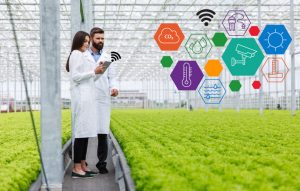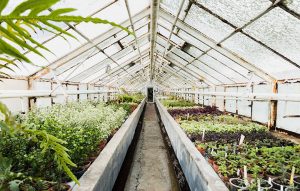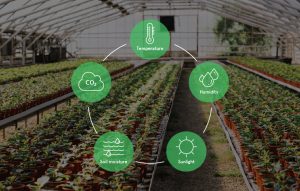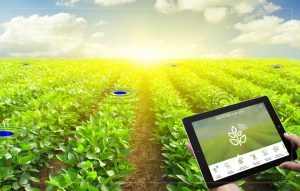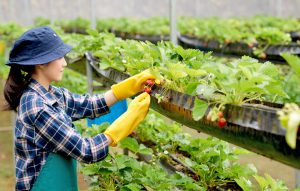Greenhouse, an urban farming approach, provides farmers with an option to provide optimum cultivation condition by offering a controlled environment according to the crop’s requirements. However, many farmers fail to get good profits and desired yield from greenhouse crops because they cannot efficiently monitor and control important factors like light, air, temperature etc., that determine plant growth and productivity.
Greenhouse crop production is now a growing reality throughout the world with an estimated 4,05,000 HA of greenhouses spread over all the continents. – Food and Agriculture Organization
Some of the major challenges faced by traditional greenhouses:
- Temperature going higher or below than a certain degree
- High humidity – resulting in crop transpiration
- Condensation of water vapor
- Water evaporation from the humid soil
Smart greenhouse is the solution
The goal of achieving high yield, high quality and high efficiency production is a problem in the study of greenhouse environment control. – MDPI
With traditional greenhouses, growers can control the environmental parameters through a proportional control mechanism which involves manual intervention, often resulting in production loss, energy loss and increased labor cost.
To overcome such challenges, automated greenhouse monitoring and control system comes to the rescue. The rising ubiquity of technologies like the Internet of Things (IoT), artificial intelligence (AI) and machine learning (ML) is a key factor in the development of a connected greenhouse in the coming years.
There are several limitations of having to manually control all the factors that can affect the quality of plants and their yields. Hence, an automated monitoring and controlling system is a solution that enhances greenhouse farming which will take guesswork out of the job.
Key components of Smart Greenhouse
Our Smart Greenhouse solution provides advanced microclimate control and energy optimization. Let’s take an example of a tomato crop growing in our Smart Greenhouse. Growers can monitor and control the parameters mentioned below to ensure better growth rate of the crop:
- Luminosity
- Temperature
- Soil moisture
- Humidity
Growers can monitor the following parameters to understand the plant growth cycle and take proactive measures if any of the factors are affected:
- Nitrogen monitoring to measure the puffiness of the produce
- Phosphorous deficiency to measure soil fertility
- pH Value
- Lycopene monitoring to get insights on the color change of the produce
- CO2 level
Benefits of our Smart Greenhouse solution
Create the right environment for better yield
With Smart Greenhouse, farmers can tailor an environment for their crops that offers a climate-smart and nutrition-sensitive atmosphere to increase the quality of crops.
Use water correctly
Water wastage is one of the major challenges that the agriculture sector faces today. And to add insult to injury, water scarcity is dramatically impacting all the continent across the globe.
60% of the water diverted or pumped for irrigation is wasted. – UN Food and Agriculture Organization
By quantifying water usage, Smart Greenhouse helps growers to increase crop yields while conserving water. Smart Greenhouse ensures apt conservation of water by setting a schedule based on the type of crops, quality, yield and local weather parameters.
Monitor consumption of resources
An automated control system of a Smart Greenhouse uses a network of sensors to monitor and measure the run-off. The insights gathered are used to measure energy consumption which in turn helps growers to use the resources optimally.
Monitor, control, automate and detect plant growth
Our Smart Greenhouse solution will enable growers to monitor their parameters that are crucial for healthy growth of the crop, send alerts when there’s a problem and allow them to manage everything remotely on any device. This will further help them with the following strategic benefits enhancing their horticultural practices:
- Monitor parameters for anomaly
- Control environment for better yield
- Save power, electricity and water consumption
This in turn will address challenges faced globally such as water crisis, nutrition deficiency, climate change, and more.



